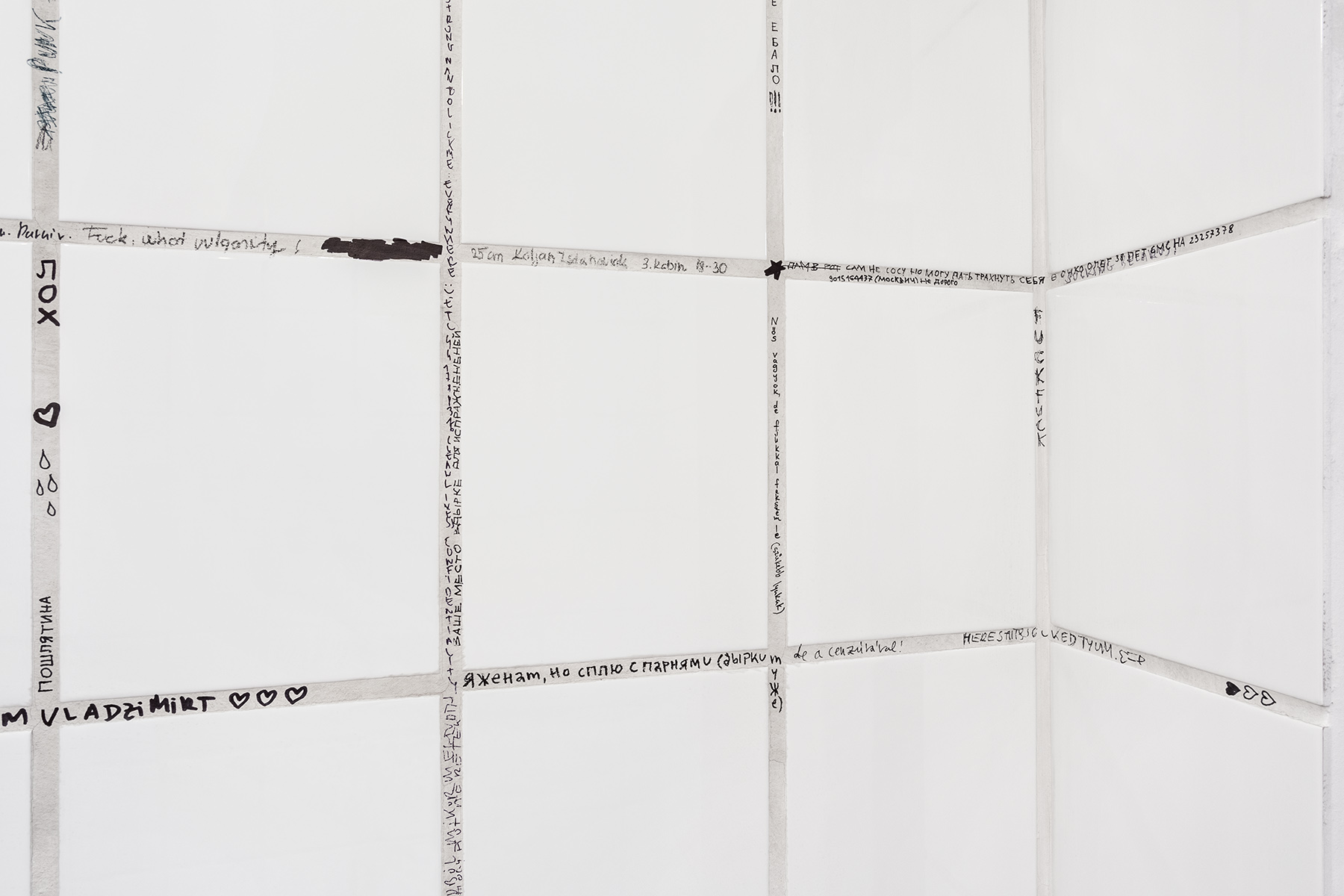Group exhibition:
ID: E22.13
Title:
Borderline Case 2.0
East-Central Europe, once again
Date:
September 30 – November 27, 2022
Place:
Budapest Gallery, Budapest, Hungary
Curator:
Tamás Don
Artists:
Yana Bachynska, Dániel Bozzai and Dániel Máté, Vasile Cătărău, Megan Dominescu, Olga Dziubak, Mátyás Erményi, Alina Kopytsa, Judit Lilla Molnár, David Přílučík, Emília Rigová, Sergey Shabohin, Jiří Žák
Work:
Total installation Zones of Repression // Displacement Zones [in Budapesht], 2022

Sergey Shabohin:
total installation Zones of Repression // Displacement Zones [in Budapesht], 2022
total installation Zones of Repression // Displacement Zones [in Budapesht], 2022
Explication:
Borderline Case 2.0 addresses the issue of East-Central European identity through the works of young artists who do not necessarily see the fall of communism in the region as a point of reference, and who no longer view the East/West dichotomy as the cornerstone of their stories. In their work, regional geopolitics are accompanied by other elements of identity construction; together they create a fabric which reveals the changing face of East-Central Europe.
The exhibition’s title was inspired by a 2009 novel by Péter Hunčík, a Slovakia-based Hungarian psychiatrist, which tells the 20th-century history of the region through the mixed population of a small Slovakian border town. It is a reference, on the one hand, to the special significance of borders in the region and, on the other hand, to the liminal state between West and East, to the ever-changing perspectives of “more here than there,” and to permanent relativity.
Borderline Case 2.0 is a new instalment of the exhibition that opened in January 2022 at Debrecen’s MODEM. The first Borderline Case featured the works of 14 young artists from 5 countries (Czechia, Hungary, Poland, Slovakia, Romania), most of which was specially created for the exhibition. While the Debrecen show laid emphasis on the historical contexts of the period between 1848 and 2021 (through the concepts of language, borders, and regional identity), the exhibition at Budapest Gallery widens its scope to include the situation of marginalised groups in the region. The war in Ukraine shows once again how crucial the questions of borders and regional solidarity are, and has, in many respects, redrawn the mental map of East-Central Europe. As a result, it was important that, in addition to existing works, the exhibition feature pieces from East-Central Europe in the broad sense, which, avoiding the pitfalls of the West/East dichotomy, reflect on social issues within the region – on an inward, and not an outward, gaze.
The exhibition’s title was inspired by a 2009 novel by Péter Hunčík, a Slovakia-based Hungarian psychiatrist, which tells the 20th-century history of the region through the mixed population of a small Slovakian border town. It is a reference, on the one hand, to the special significance of borders in the region and, on the other hand, to the liminal state between West and East, to the ever-changing perspectives of “more here than there,” and to permanent relativity.
Borderline Case 2.0 is a new instalment of the exhibition that opened in January 2022 at Debrecen’s MODEM. The first Borderline Case featured the works of 14 young artists from 5 countries (Czechia, Hungary, Poland, Slovakia, Romania), most of which was specially created for the exhibition. While the Debrecen show laid emphasis on the historical contexts of the period between 1848 and 2021 (through the concepts of language, borders, and regional identity), the exhibition at Budapest Gallery widens its scope to include the situation of marginalised groups in the region. The war in Ukraine shows once again how crucial the questions of borders and regional solidarity are, and has, in many respects, redrawn the mental map of East-Central Europe. As a result, it was important that, in addition to existing works, the exhibition feature pieces from East-Central Europe in the broad sense, which, avoiding the pitfalls of the West/East dichotomy, reflect on social issues within the region – on an inward, and not an outward, gaze.


















© photos: Juhász G. Tamás